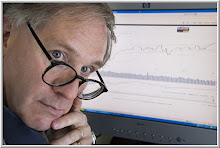 In a recent post, I suggested that the enhancement of focus and concentration--not the elimination of emotions--was a central goal of trading psychology. Because expertise comes from a relentless learning process, and because we process new information more deeply when we are in a state of enhanced concentration, anything we can do to minimize distractions is likely to help us internalize market patterns and retain access to them once they're acquired. Unlike many authors who have written on the topic of trading psychology, I do not subscribe to the notion that emotions are the root of all trading problems and that anyone can succeed at trading if they develop themselves psychologically. Trading success requires skill and a true edge in the marketplace. When the loss of discipline is an issue for traders, many possible causes may be present. Often, it is the result of trying to trade a style or time frame that does not fit one's basic talents, skills, and interests. It is very difficult to find your performance edge if your basic approach does not match your basic skill sets.
In a recent post, I suggested that the enhancement of focus and concentration--not the elimination of emotions--was a central goal of trading psychology. Because expertise comes from a relentless learning process, and because we process new information more deeply when we are in a state of enhanced concentration, anything we can do to minimize distractions is likely to help us internalize market patterns and retain access to them once they're acquired. Unlike many authors who have written on the topic of trading psychology, I do not subscribe to the notion that emotions are the root of all trading problems and that anyone can succeed at trading if they develop themselves psychologically. Trading success requires skill and a true edge in the marketplace. When the loss of discipline is an issue for traders, many possible causes may be present. Often, it is the result of trying to trade a style or time frame that does not fit one's basic talents, skills, and interests. It is very difficult to find your performance edge if your basic approach does not match your basic skill sets.Where the issues of focus/concentration and behavioral discipline come together is under a wider umbrella that we can call executive self-control. In a recent post, I explained how I use a form of biofeedback called hemoencephalography to enhance activation of the brain's executive center: the frontal cortex. When we sustain such activation, we not only possess superior concentration; we also have greater behavioral control. As mentioned in that article, the frontal cortex is the CEO of the brain: it focuses our efforts and effects our reasoning, planning, and judgment. The ability to sustain frontal activation should thus help traders on two related fronts: 1) in the deep learning (internalization) of market patterns; and 2) in the ability to act upon these patterns in planful ways. In short, the highly developed trader is the highly regulated trader: able to retain an emotional feel for markets after seeing many patterns repeated, but also able to not become overly swayed by situational pressures and the shifts of emotional state they create.
A recent journal article in psychology highlights heart rate variability as a promising index of self-regulation. As the article explains, heart rate variability is a measure of flexibility of autonomic responding. In the authors' words, "...heart rate variability (HRV) is a measure of the continuous interplay between sympathetic and parasympathetic influences on heart rate that yields information about autonomic flexibility and thereby represents the capacity for regulated emotional responding" (p. 230). High levels of HRV, suggesting superior ability to regulate emotional responses, have been found to be linked to superior coping under stress and enhanced attention. Low HRV has been linked to such psychological disorders as anxiety and depression. A list of studies related to HRV can be found on the SharpBrains site.
Now here's the interesting part. When I sat at my trade station and used the Freeze Framer program to measure and chart my own HRV, I found that I had a smooth set of sine-wave curves (see above). That smooth pattern, which the developer of Freeze Framer calls "coherence", represents a high degree of HRV: enhanced flexibility and regulation of emotional response. I then introduced an annoying distraction into the situation and notice how the shape of the sine wave curves was destroyed. I entered a period of low HRV. After a few other experiments, I found that even the simple distraction of a conversation lowered my HRV readings.
Might it be possible to track our degree of executive self-control during trading by following our HRV through the day? Might it be possible to train traders to achieve higher levels of self-regulation? Might enhanced HRV be related to trading performance? These will be the topics of the second post in this series.



